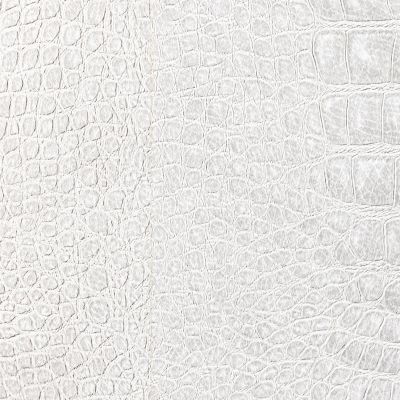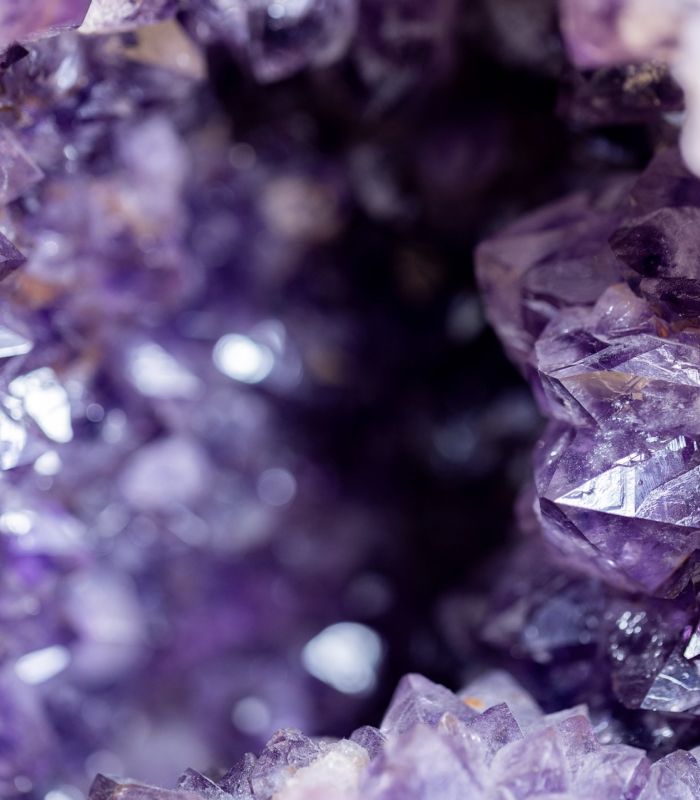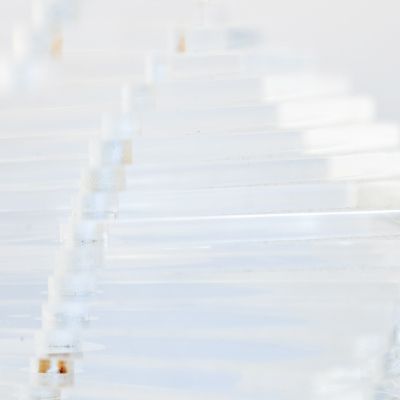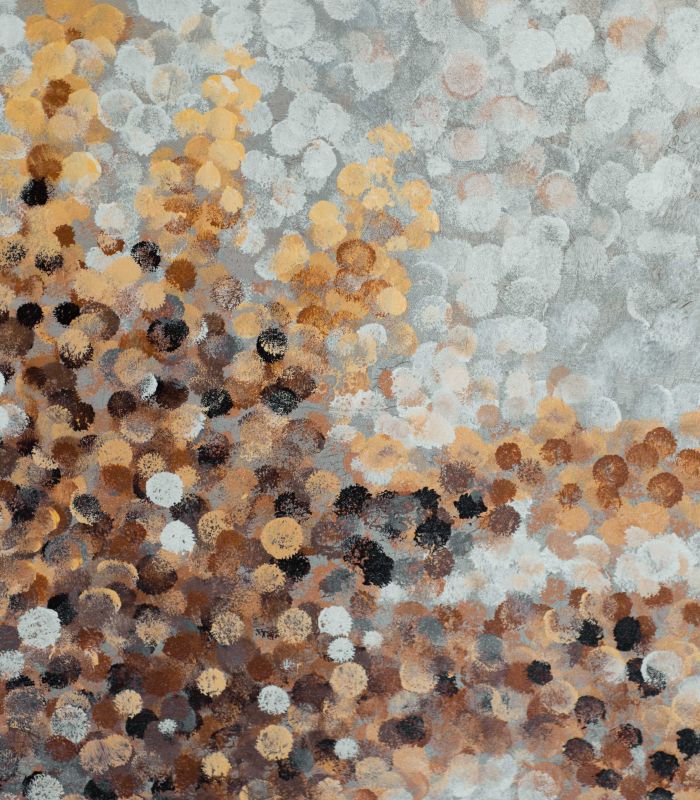Is Labiaplasty Right for You? A Guide to Costs, Benefits, and Realistic Expectations


Offering many solutions, including Vivace, Morpheus8, PicoSure, ProFractional, MicroLaser Peel, Erbium Contour TRL, HALO, Renuvion, and others.
1 of 7
Above are before and after pictures of patients that have received surgical and non-surgical treatments for skin texture.
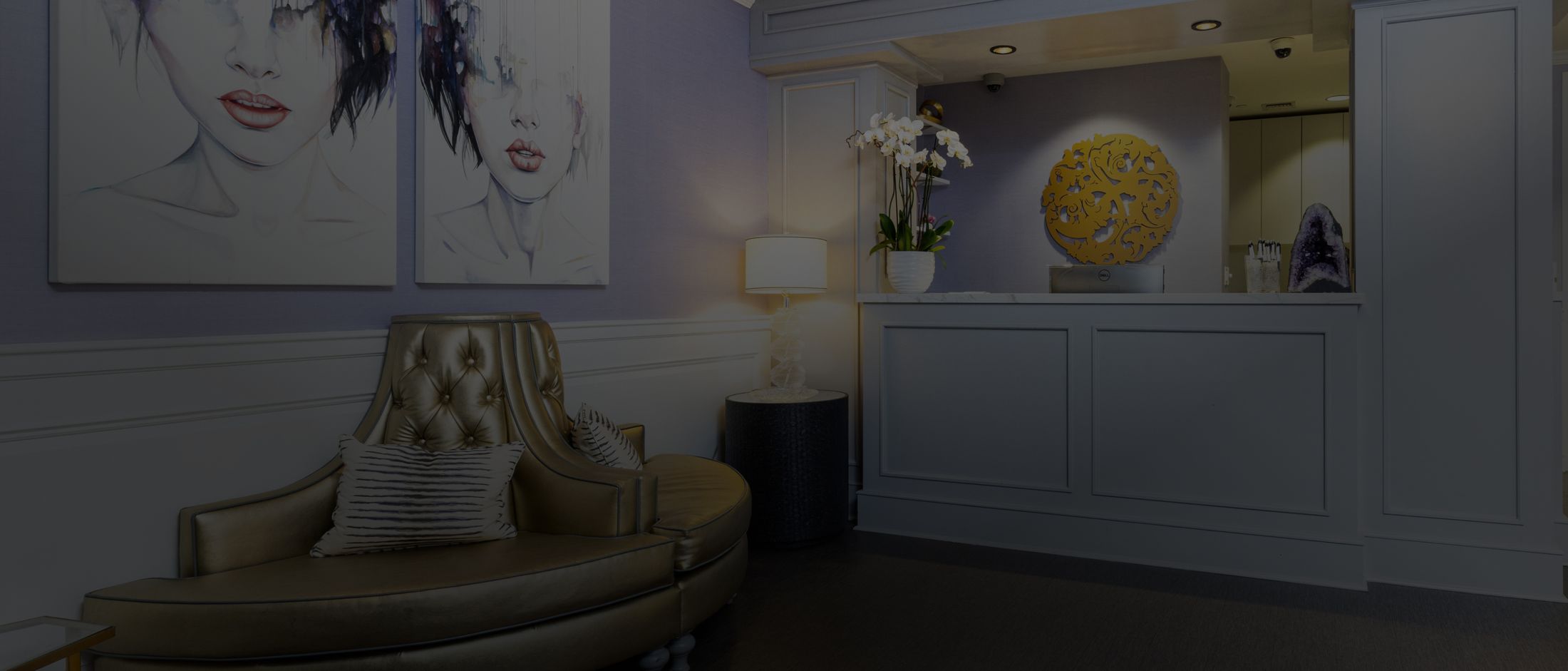
Abnormal skin texture and uneven pigmentation are common conditions that almost everyone experiences at one point in their lives. Texture can include bumps, moles, wrinkles, scars, and pores — anything that causes the skin to feel coarse or irregular. While skin texture is typically not a pressing issue, it can affect the appearance of the skin, resulting in an undesirable look. Fortunately, many treatments are available to minimize and eliminate different types of skin texture. Reducing the appearance of texture can rejuvenate your overall look and leave you with healthier-looking, smoother skin. During your consultation, Dr. Sheila Nazarian or your experienced provider will review the best options to achieve your desired results.
Uneven skin texture refers to the surface feel and appearance of the skin. Different forms of skin texture may include:
Chronic skin conditions such as rosacea, eczema, or psoriasis can also stimulate irregular skin texture. The first step to treating skin texture concerns is identifying the root cause.
How Common is texture?
Skin texture is a prevalent ailment that men and women of all ages experience. It can occur in nearly all areas of the body. One of the most common causes is the build-up of dead skin cells that cause an uneven skin texture. Regular exfoliation can help break down a build-up of dead cells and leave the skin feeling smoother.
Gender: Any gender
Locating a licensed professional to identify the cause of your texture or uneven skin tone concerns is essential to determining the proper treatment method to combat your skin issues. Signs and symptoms of this common condition range from subtle and harmless to severe and potentially dangerous.Rough skin texture or uneven skin tone is visible as bumps, moles, large pores, hyperpigmentation, roughness, or dryness. The specific cause indicates many different signs and symptoms, including:

The picture above is an example of enlarged pores and acne scarring.
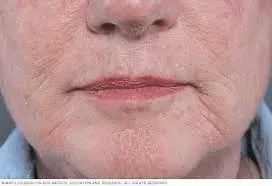
The picture above is an example of facial skin wrinkles.
Skin texture is a common condition caused by multiple different factors, including:
Treating skin texture can make a massive difference in the skin's overall appearance. There are several treatments available today that provide impressive benefits, including:

Nazarian Plastic Surgery offers many solutions to improve skin texture, including Vivace, Morphius8, Picosure, Profractional, Micro Laser Peel, Erbium Contour TRL, Halo, Renuvion, and more. Laser resurfacing devices use a single wavelength of color in a high concentration. This wavelength can produce heat to target certain small areas of skin at a time. All lasers fall into two categories:
Recovery time from each type is minimal, with many patients able to resume regular activities immediately following the procedure. Ablative lasers target the skin's surface, removing damage and impurities, and Nonablative lasers target underneath the surface layer. Aside from laser treatments, surgical and non-surgical treatments, at-home remedies, and products are available to correct various skin texture conditions and enhance treatment results.
Mole, Cyst, and Lipoma Removal: Mole, Cyst, and Lipoma Removal is a surgical procedure that removes cysts, moles, and lipomas from the surface layer of the skin as well as below the skin.
Scar Revision Surgery: Scar Revision Surgery is a procedure that helps to reduce multiple types of visible scarring. This procedure can treat discoloration as well as improve the overall texture of the skin.
Lasers: Lasers incorporate innovative cosmetic technology that allows cosmetic surgeons to correct various skin texture conditions. Some of our favorite laser treatments for uneven texture, rosacea, and melasma include:
Chemical Peels: A chemical peel is a skin treatment that uses a chemical exfoliant to remove and heal damaged outer layers of the skin. Several levels of peels are available, depending on your specific needs and goals. These are good for brightening your complexion, reducing hyperpigmentation, fine lines, and wrinkles, and improving texture.
Microneedling: Microneedling is a procedure where tiny needles pierce the skin to boost collagen production and increase skin cell turnover. These treatments effectively treat uneven texture caused by sun damage, open pores, and acne scars. Patients often see noticeable results after just one treatment.
Optimizing your skincare routine for products catered to your specific skin concerns will help reinforce the surface of the skin, eliminate dark spots or skin damage, and reduce your pore size for a smoother texture devoid of rough patches.
Skin Exfoliation: Physical exfoliation of the skin with a chemical, mechanical, or enzymatic exfoliant is a highly effective way to treat skin texture at home. Exfoliating breaks down the build-up of dead skin cells on the surface layer of the skin, resulting in a smoother, more even texture.
Moisturize: Staying hydrated and adding a potent moisturizer to your skincare regimen can help reinforce the skin's moisture barrier and reduce and prevent uneven skin texture and tone.
Broad Spectrum SPF: Using high-quality sunscreen during direct sun exposure can help reduce sun damage and regulate skin texture issues.
Skin Rejuvenation Devices: These devices include LED masks, tools for enhancing skin exfoliation, dermarollers, and more to improve your skin texture at home or prolong the results of a cosmetic treatment.
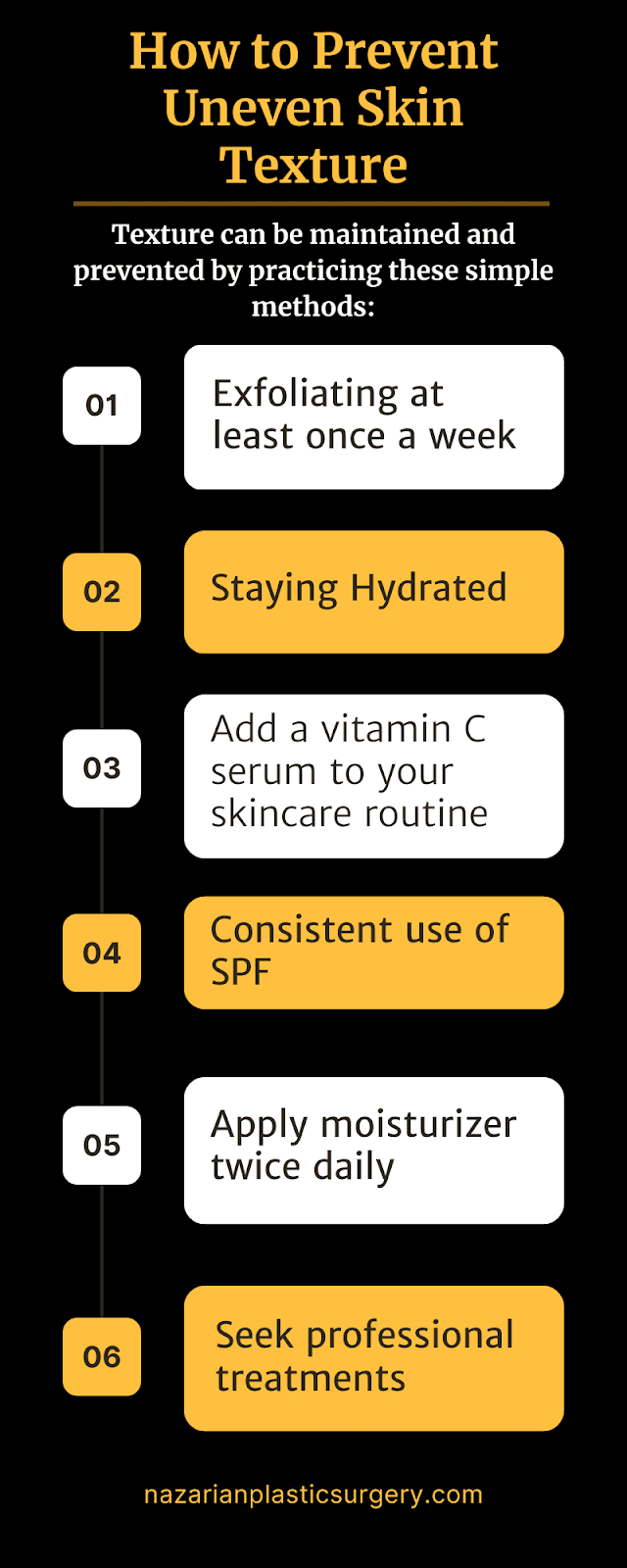

Skin texture is a condition that ranges from mild and can be treated at home to severe, which may require medical attention. However, many cases need professional assistance to correct the underlying issue. Including:
Dr. Nazarian and her team’s goal with every procedure is to make you as comfortable as conceivably possible. For most surgical procedures, she likes her patients to increase their protein intake both before and after surgery. She has found that this really helps to jump-start your recovery so that you heal faster. She does not recommend dieting either before or after surgery. Medical-grade arnica, bromelain, and Vitamin K should also be started one month before surgery. These are available in the office.
If you want to make positive changes to your appearance while boosting your self-confidence, this is the right place for you. Nazarian Plastic Surgery has a team of highly experienced and caring professionals ready to help you achieve your goals. Our team includes a Board Certified Beverly Hills Plastic Surgeon, Registered Nurse, and Aestheticians who are committed to providing you the safest and best in plastic surgery and non-surgical procedures.
Finally, at Nazarian Plastic Surgery we have an on-site, state-of-the-art surgical facility, as well as modern and comfortable out-patient treatment suites. These added benefits help ensure that we meet our goal of achieving the most natural-looking and optimal results, while always keeping your safety first.
Consultation Information
If you would like more information about this procedure please call Nazarian Plastic Surgery at (310) 773-3039 or request a consultation today. Dr. Nazarian will discuss your options and help determine a procedure plan that is right for you and achieve your aesthetic goals.
